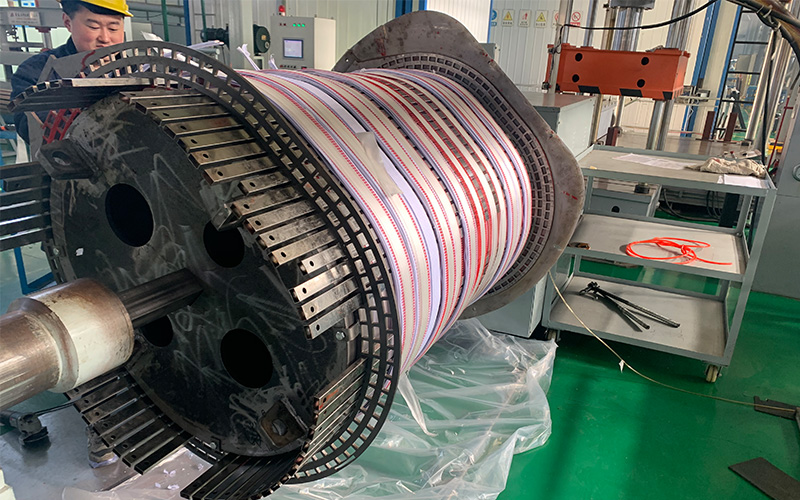- E-mail: admin@yaweitransformer.cn
- Tel: +86-18862719076
Dry-type transformer is a kind of common power transformer. The insulating medium is dry air or nitrogen, and there is no liquid insulating medium, so it can effectively avoid oil pollution and fire hazards, and has the advantages of safe use, simple structure and easy maintenance. Design and manufacture of dry transformers need to consider the following points and considerations.
1. Choose the right design. When designing a dry-type transformer, Jiangsu Rongxiang Transformer Co., Ltd. needs to determine the rated capacity and rated current of the transformer according to the use scenario, load demand and safety requirements. At the same time, it is also necessary to consider the portability and heat dissipation performance of the transformer to ensure that the transformer can work normally and has a carrying capacity.
2. Select the appropriate insulation material. Insulation materials of dry transformers should have good insulation properties, heat resistance and good mechanical strength. Common insulating materials include fiberglass cardboard, epoxy cardboard and polyimide film. The selection of suitable insulating materials can improve the insulation capacity and heat resistance of the transformer, and ensure the normal operation of the equipment.
3. Design reasonable winding structure. The winding is the core part of the dry-type transformer, and its structural design needs to be reasonable to ensure that the winding can withstand the rated current and maintain good heat dissipation performance. In winding design, it is necessary to pay attention to the selection of factors such as winding layout, winding spacing, winding cross-sectional area and winding resistance to reduce resistance loss and heat loss, while ensuring the mechanical strength and insulation capacity of the winding.
4. Reasonably design the heat dissipation system. The cooling system of dry type transformer is the key to ensure the normal operation of transformer. The heat dissipation system should be able to effectively dissipate the heat generated inside the transformer so that the transformer can be maintained within the appropriate temperature range. The cooling system can be cooled naturally or by forced cooling, such as air cooling or water cooling. When designing a heat dissipation system, factors such as the heat dissipation area, the velocity of the heat dissipation medium and the layout of the heat dissipation equipment need to be considered.
5. Choose the appropriate insulation structure and sealing method. Dry transformers need to maintain good insulation performance during operation to prevent electrical breakdown and insulation failure. Therefore, it is very important to choose the appropriate insulation structure and insulation materials. At the same time, the use of appropriate sealing methods (such as shell sealing or insulation pad sealing) can effectively prevent the intrusion of dust and moisture, and improve the insulation reliability of the transformer.
6. Strictly control the manufacturing process. In the manufacturing process of dry transformers, the relevant manufacturing specifications and standards need to be strictly implemented to ensure that the transformer manufactured meets the relevant requirements. Including the insulation symmetry of transformer, insulation surface cleaning and quality control. In addition, it is necessary to carry out the necessary tests and detection, such as temperature rise test, insulation resistance measurement, insulation strength test and partial discharge detection, etc., to ensure the quality and performance of the transformer.
In short, the design and manufacturing process of dry transformers needs to consider many aspects, including material selection, winding structure, heat dissipation system, insulation structure and so on. Only when these points and considerations are properly addressed during the design and manufacturing process can the quality and performance of the dry transformer be guaranteed and its safe operation be ensured.
